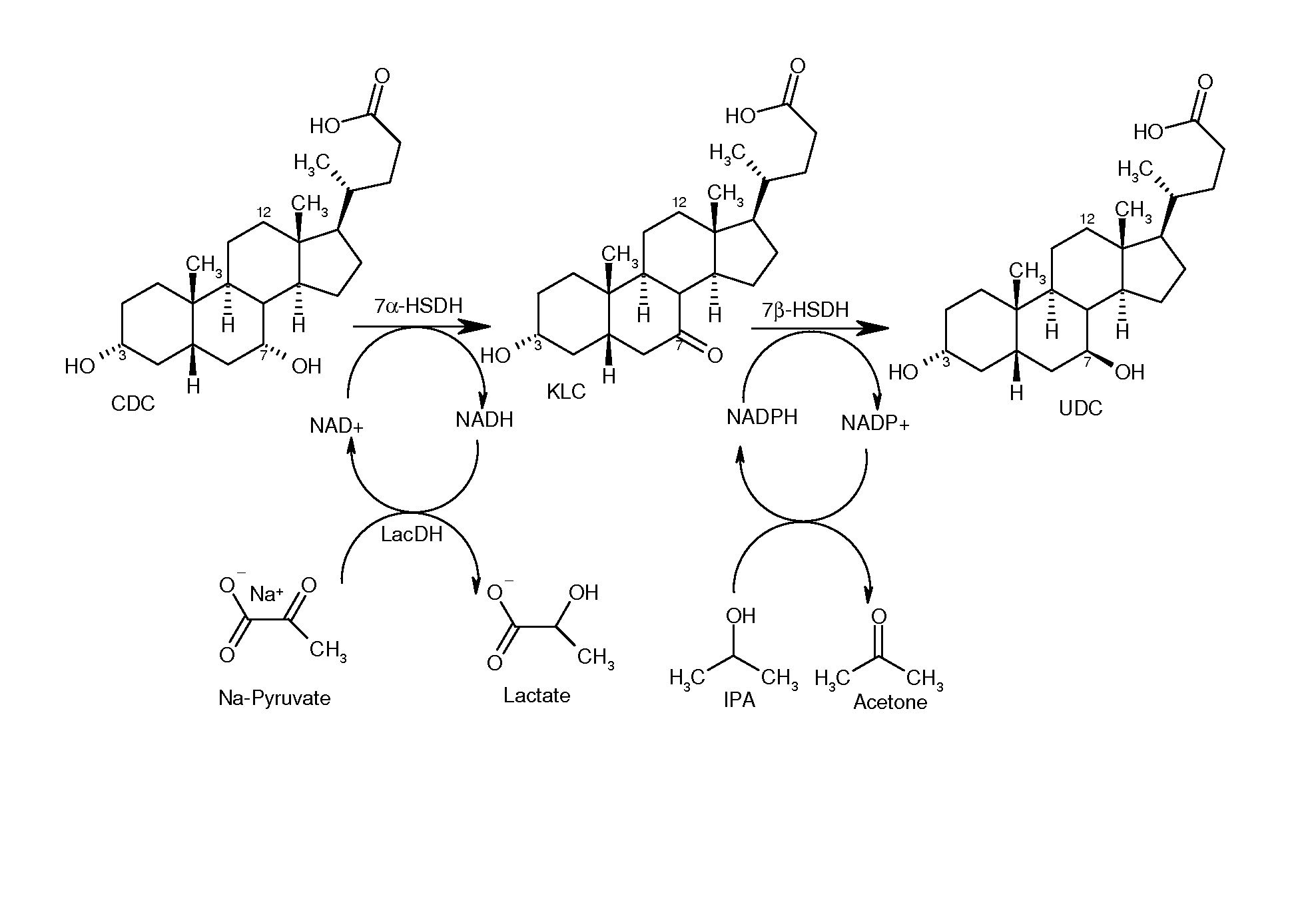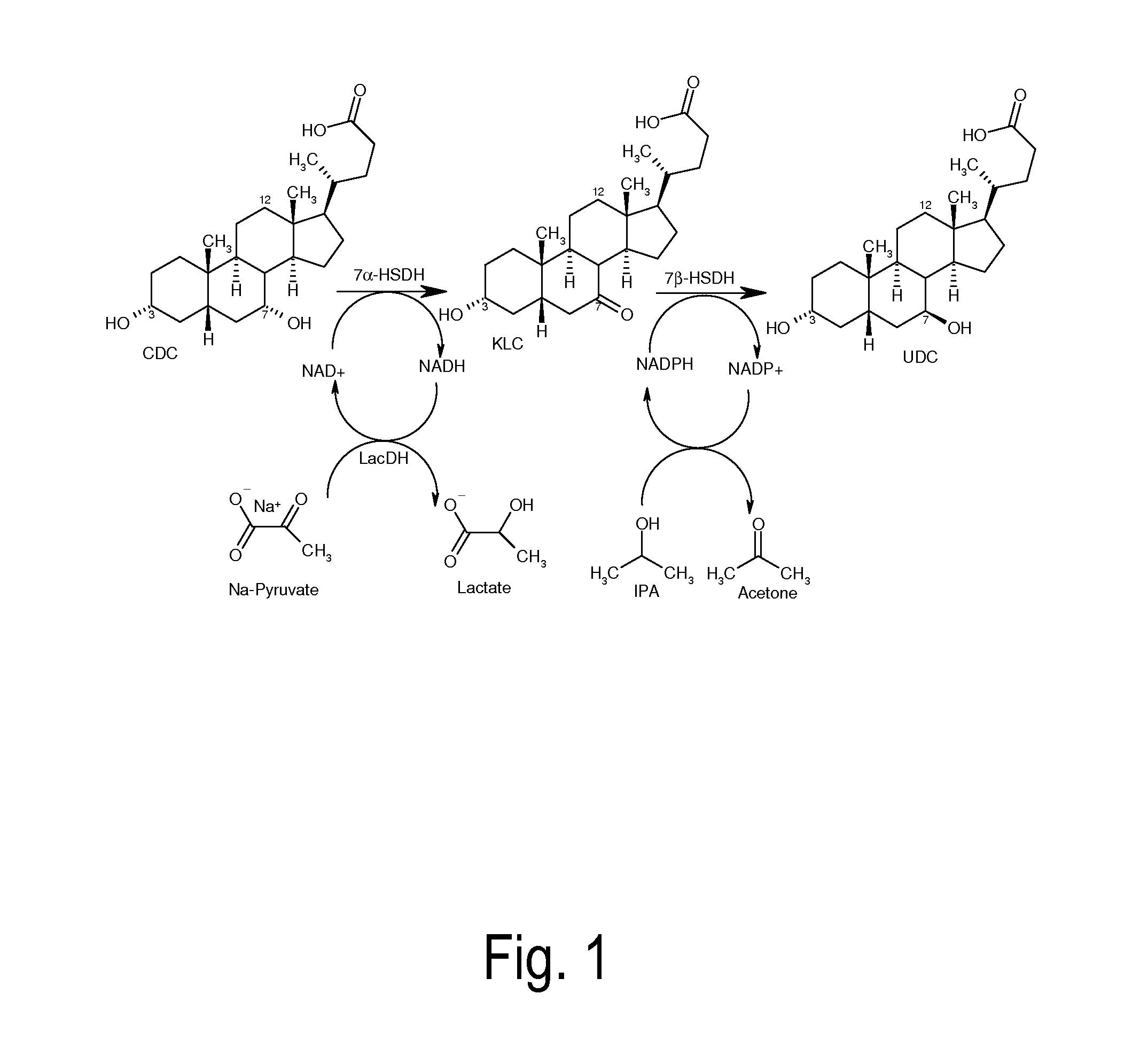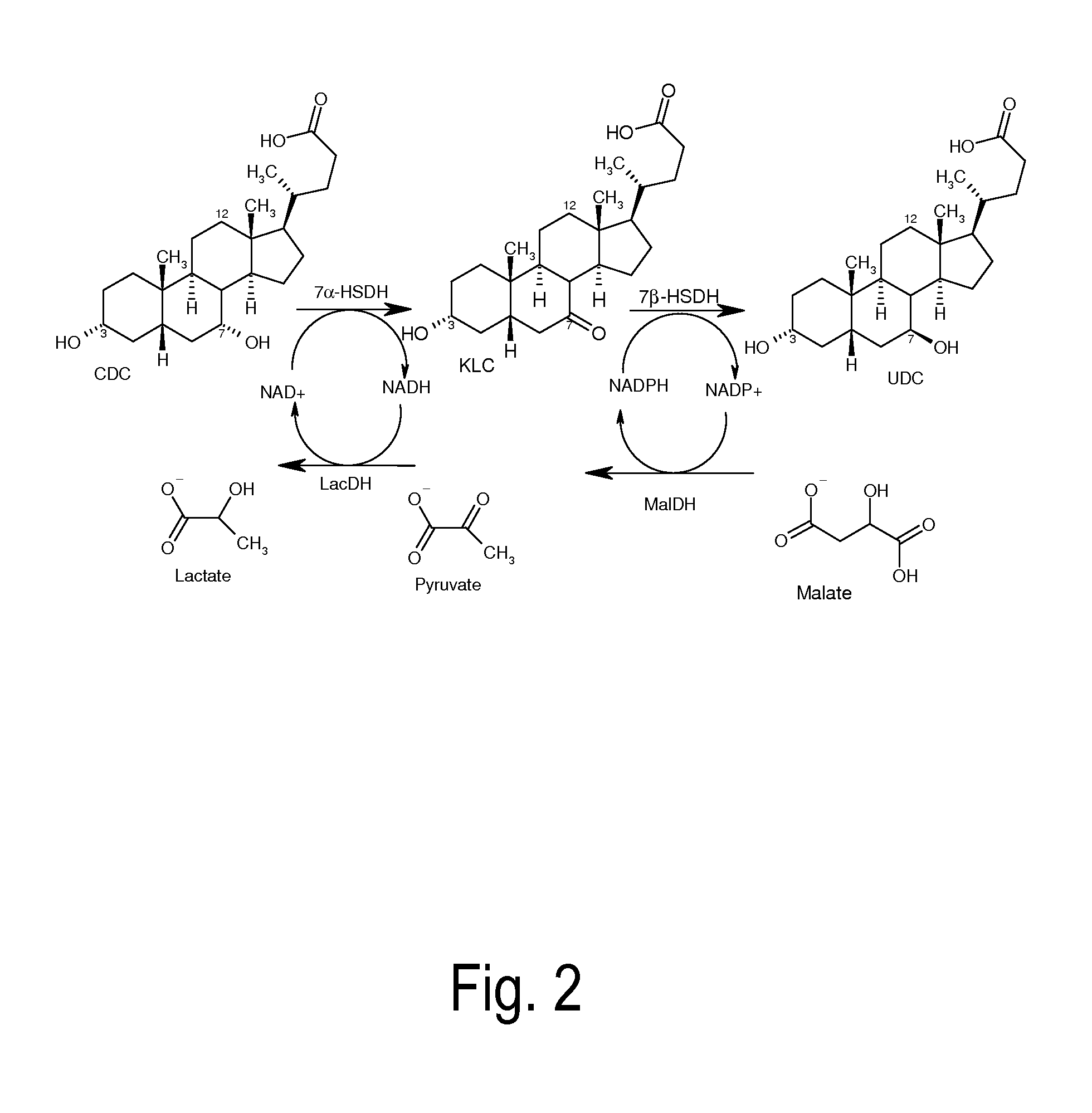Process for the enzymatic regeneration of redox cofactors
- Summary
- Abstract
- Description
- Claims
- Application Information
AI Technical Summary
Benefits of technology
Problems solved by technology
Method used
Image
Examples
example 2
Epimerization of chenodeoxycholic acid into ursodeoxycholic acid by 7α-hydroxysteroid dehydrogenase and 7β-hydroxysteroid dehydrogenase, using a lactate dehydrogenase- and malate dehydrogenase-dependent cofactor regeneration system
[0125]A 0.5 ml charge contains 50 mg chenodeoxycholic acid, 20 U of recombinant 7α-hydroxysteroid dehydrogenase from Escherichia coli, 20 U of recombinant 7β-hydroxysteroid dehydrogenase from Ruminococcus torques as well as 1 mM NAD+ and 1 mM NADPH. For the regeneration of NAD+, 10 U of the lactate dehydrogenase (Sigma-Aldrich) are used, and for starting the reaction, 16.5 mM sodium pyruvate is used. For the regeneration of NADPH, 20 U of recombinant malate dehydrogenase from Escherichia coli and 320 mM sodium malate are used. The reaction is performed in an aqueous potassium phosphate buffer (100 mM, pH=7.8) at 25° C., with continuous shaking (850 rpm). An open system continues to be used in order to allow the nascent CO2 to escape. 20 U of 7α-HSDH as wel...
example 3
Epimerization of chenodeoxycholic acid into ursodeoxycholic acid by 7α-hydroxysteroid dehydrogenase and 7β-hydroxysteroid dehydrogenase, using an NADH oxidase- and alcohol dehydrogenase-dependent cofactor regeneration system
[0126]A 0.5 ml charge contains 50 mg chenodeoxycholic acid, 12 U of recombinant 7α-hydroxysteroid dehydrogenase from Escherichia coli, 7.5 U of recombinant 7β-hydroxysteroid dehydrogenase from Ruminococcus torques as well as 1 mM NAD+ and 1 mM NADPH. For the regeneration of NAD+, 20 U of recombinant NADH oxidase from Clostridium aminovalericum are used. For the regeneration of NADPH, 5 U of recombinant alcohol dehydrogenase from Lactobacillus kefir and initially 2% IPA (w / v) are used. The reaction is performed in an aqueous potassium phosphate buffer (100 mM, pH 6) at 25° C., with continuous shaking (850 rpm). An open system continues to be used in order to facilitate the evaporation of acetone and to shift the reaction toward ursodeoxycholic acid. 2% IPA is addi...
example 4
Reprocessing and Analytics of Bile Acids
[0127]Upon completion of reactions as described in Examples 1 to 3, the reaction mixture is extracted with EtOAc. Subsequently, the solvent is removed by evaporation. The evaporation resisue is dissolved in a mixture of MeOH:acetonitrile:sodium phosphate buffer pH=3, 0.78 g / l (40:30:37) and the conversion of chenodeoxycholic acid into ursodeoxycholic acid is monitored by HPLC. Thereby, a reversed-phase separation column (ZORBAX® Eclipse® XDB C18, flow 0.8 ml / min) and a light-refraction detector (RID), Agilent 1260 Infinity®, both from Agilent Technologies Inc., are used.
PUM
 Login to View More
Login to View More Abstract
Description
Claims
Application Information
 Login to View More
Login to View More - R&D
- Intellectual Property
- Life Sciences
- Materials
- Tech Scout
- Unparalleled Data Quality
- Higher Quality Content
- 60% Fewer Hallucinations
Browse by: Latest US Patents, China's latest patents, Technical Efficacy Thesaurus, Application Domain, Technology Topic, Popular Technical Reports.
© 2025 PatSnap. All rights reserved.Legal|Privacy policy|Modern Slavery Act Transparency Statement|Sitemap|About US| Contact US: help@patsnap.com



